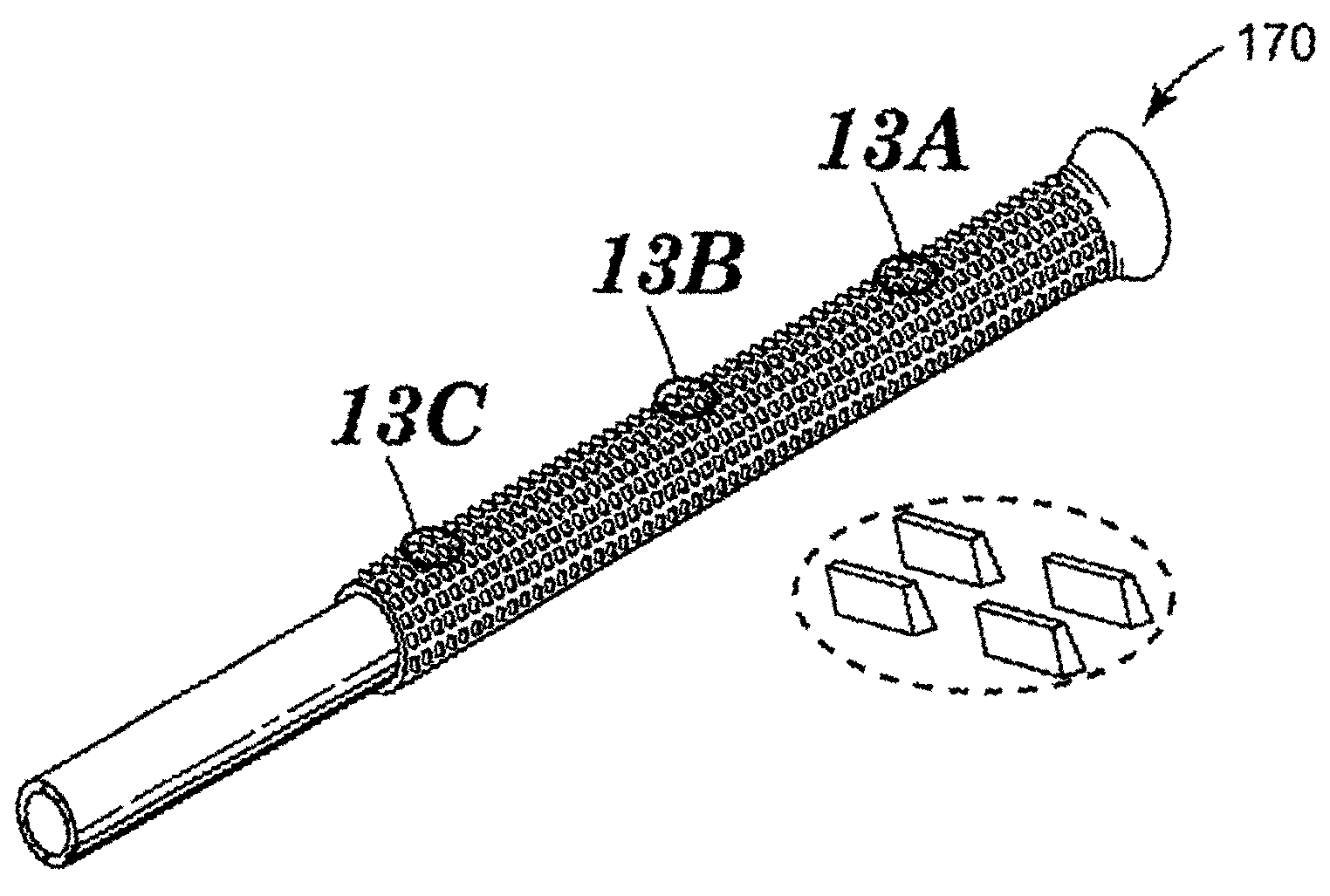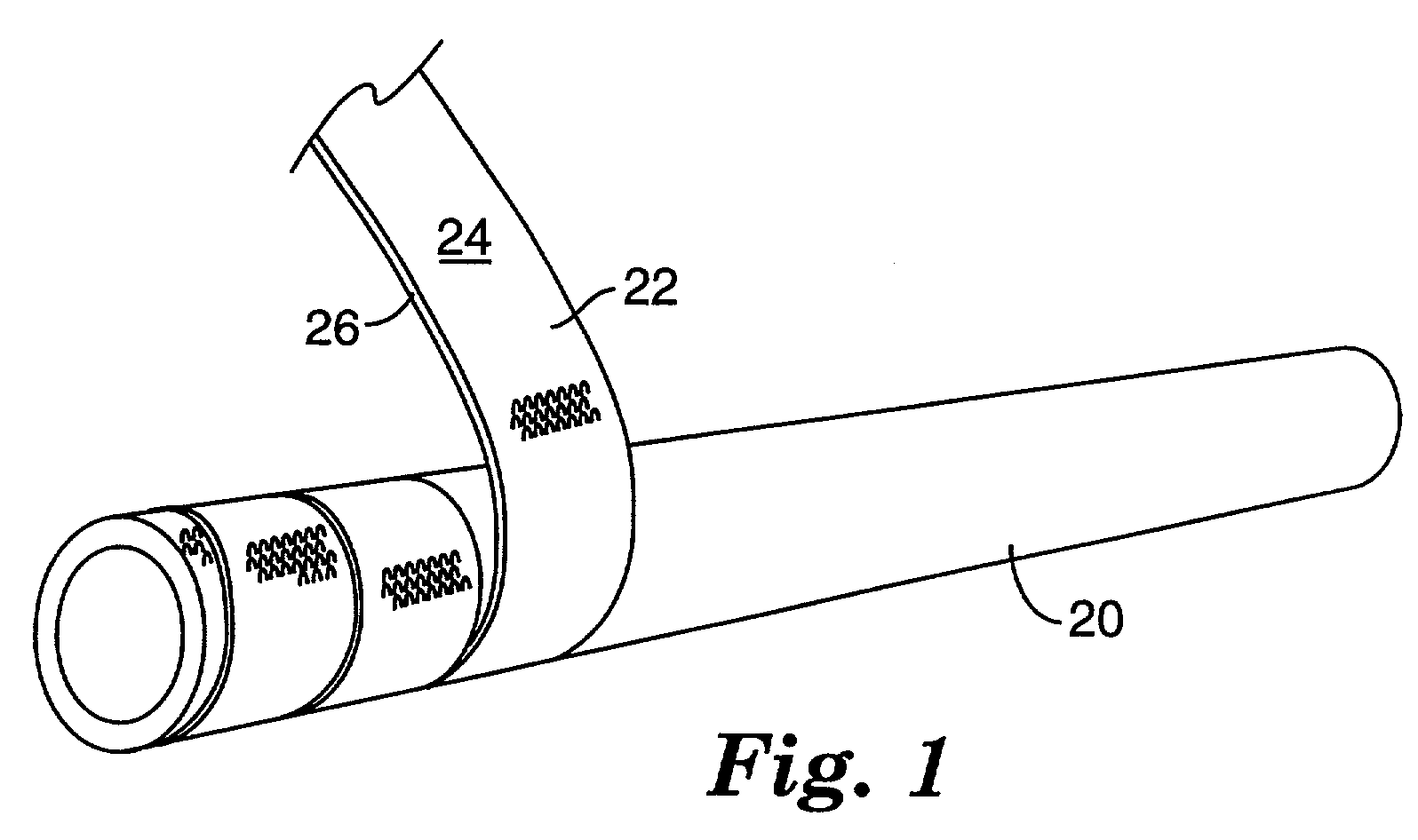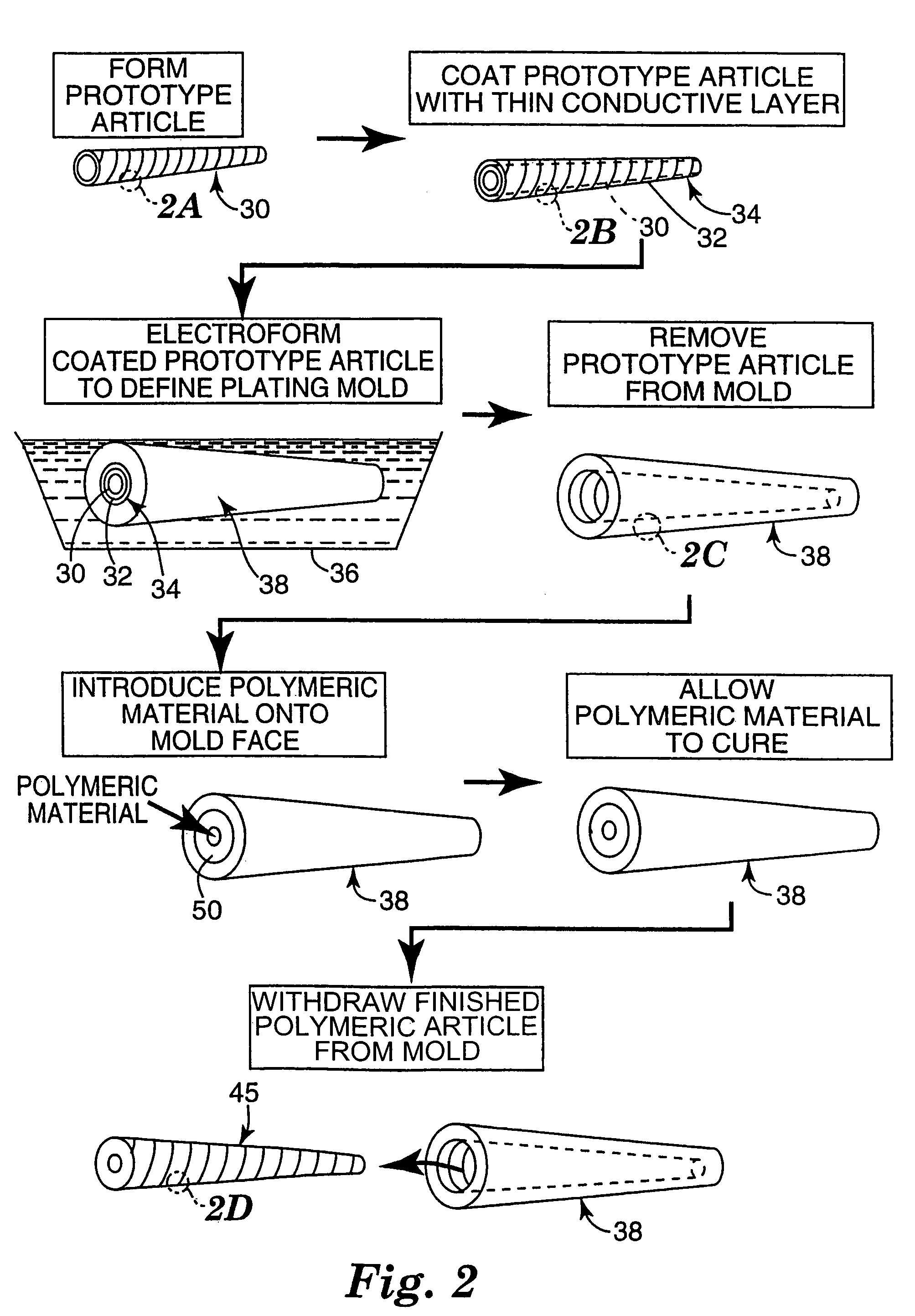Microreplicated surface
a micro-replicated surface and surface technology, applied in the field of micro-replicated surfaces, can solve the problems of relatively expensive mold production techniques and the inability to create such intricate features on molds, and achieve the effect of high tolerances
- Summary
- Abstract
- Description
- Claims
- Application Information
AI Technical Summary
Benefits of technology
Problems solved by technology
Method used
Image
Examples
Embodiment Construction
[0026]The present invention relates to the development of a simple and inexpensive technique for creating a mold for polymeric articles, and the articles formed therefrom (and particularly for articles including a microreplicated surface thereon). One particular application for using the inventive techniques is to make molded polymeric grips, such as grips for bicycle or motorcycle handle bars, golf clubs, baseball or softball bats, ski poles, jet skis handles, hockey sticks, and other sporting grips and tool grips. Such grips can be injection molded (or also by other suitable processes, such as casting, insert molding, vacuum casting, etc.), and, with the application of the present invention, can have detailed microreplicated surface topography features precisely molded into the surface of the grip. The use of such a grip in combination with a similar microreplicated surface on a glove provides a high shear resistance gripping system therebetween. A grip typically is elongated long...
PUM
| Property | Measurement | Unit |
|---|---|---|
| Height | aaaaa | aaaaa |
Abstract
Description
Claims
Application Information
 Login to View More
Login to View More - R&D
- Intellectual Property
- Life Sciences
- Materials
- Tech Scout
- Unparalleled Data Quality
- Higher Quality Content
- 60% Fewer Hallucinations
Browse by: Latest US Patents, China's latest patents, Technical Efficacy Thesaurus, Application Domain, Technology Topic, Popular Technical Reports.
© 2025 PatSnap. All rights reserved.Legal|Privacy policy|Modern Slavery Act Transparency Statement|Sitemap|About US| Contact US: help@patsnap.com



